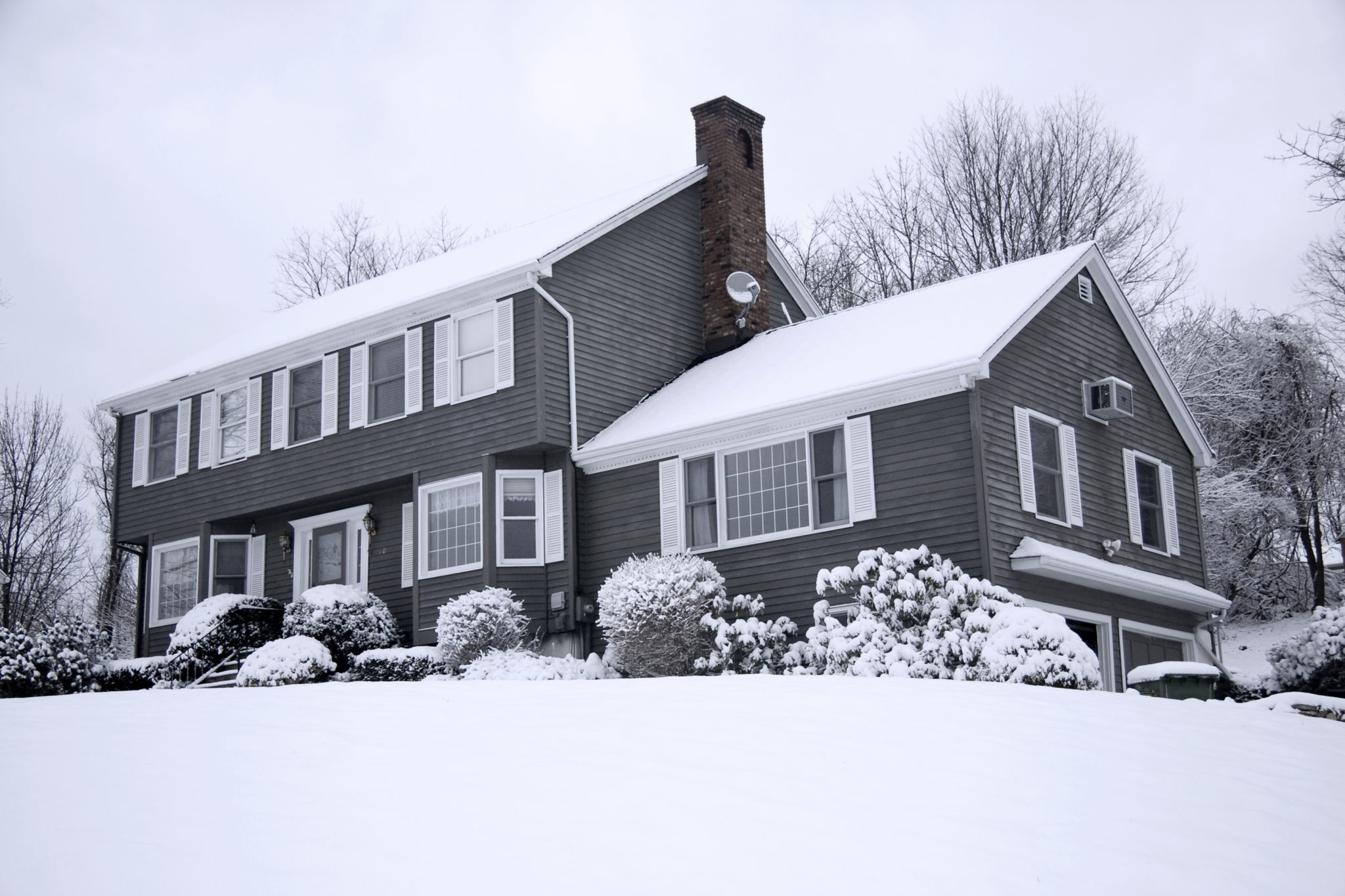Get Your Roof Ready for Winter
Winter Approacheth
Perhaps your best line of defense against the harsh winter weather is your roof. It is responsible for protecting your home from the top down. So, before that cold weather arrives, it is wise to be sure your roof is prepared for the task.
Fall is a wise time of year to have your roof examined to be sure it is in good condition before winter limits your repair efforts. It is best to perform this checkup after you’ve cleaned out the gutters for fall so that problems are easier to spot. You should choose a professional who is trained in ladder safety and working at heights to inspect and maintain your roof. We’ll walk you through how to inspect a roof for winter so that you know what to expect from the professional you choose.
What if you find out that your roof needs repairs or needs to be replaced? It’s important to get roof work done before the winter weather arrives. We’ll explain what you should expect from fall repairs and replacement.
Also, autumn is also a great time of year to check out your attic insulation and ventilation. Don’t forget about hanging fall decorations. Or, if you’re an early bird, don’t forget to hang your Christmas lights. There’s a lot to do before the snow arrives. Here’s how you should prepare your roof for the winter.
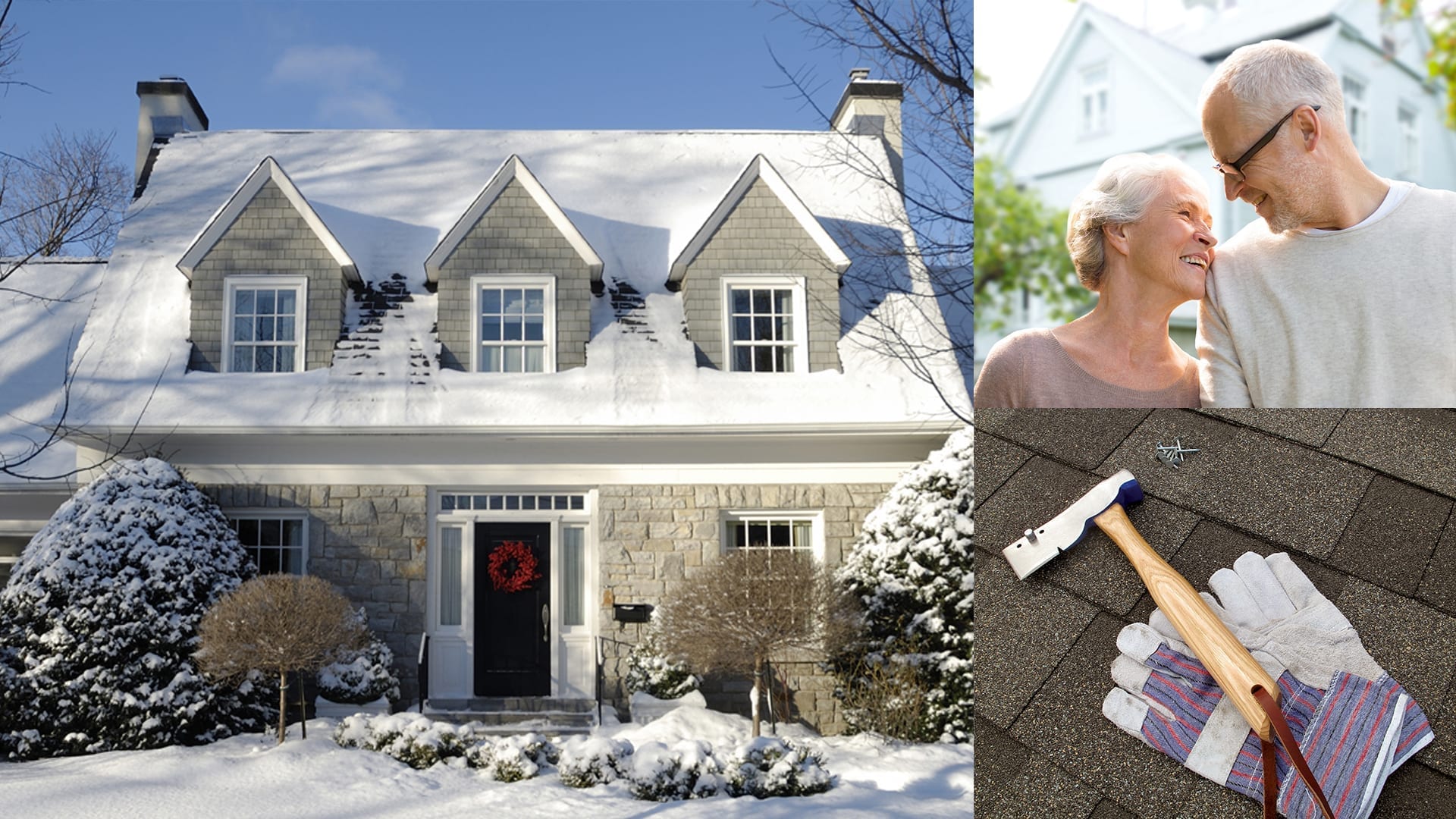
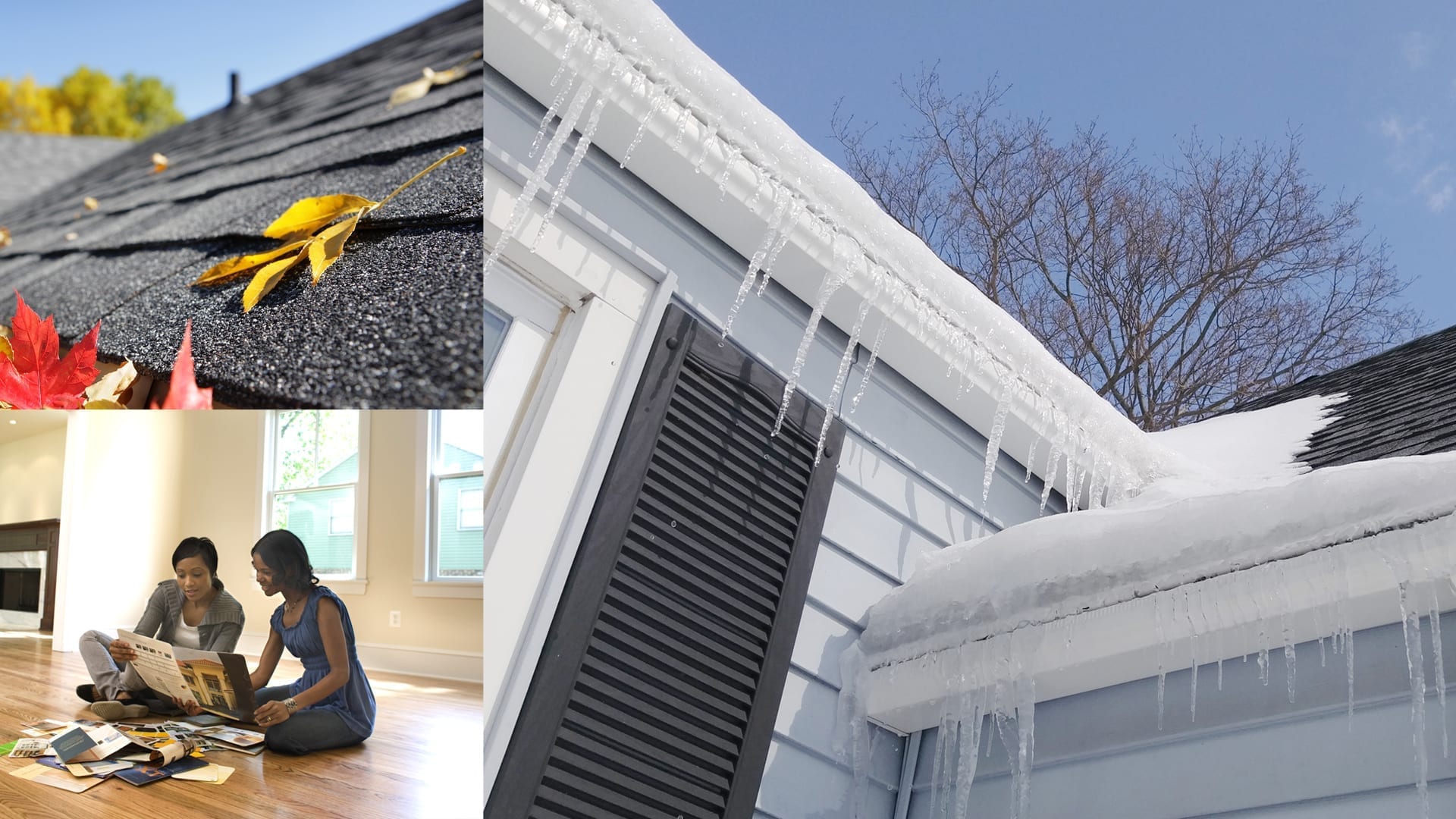
1. Fall Gutter and Roof Cleaning
In Canada and the northern United States, autumn brings falling leaves. While beautiful, these can get caught in your gutters. After the majority of the leaves have fallen, it is essential to clean them up. If you don’t know how to clean your gutters , you can read our guide or hire a professional to do it for you.
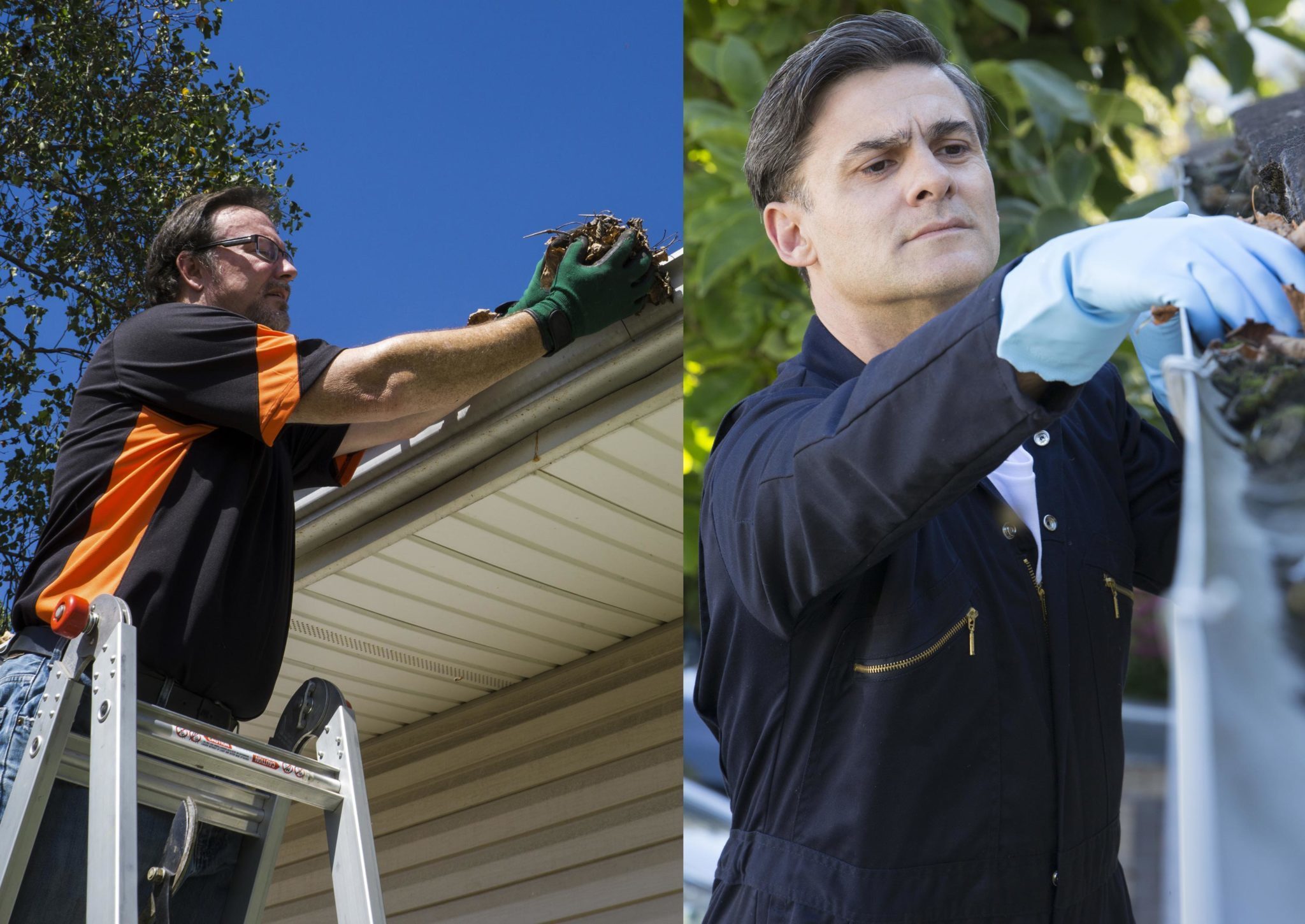
When cleaning out your gutters before winter, it’s also a good idea to have your eye out for signs of animal infestations. Squirrels, raccoons, birds, bees, bats, wasps and hornets may all take up residence on your roof. For safety reasons, you may want to call in a pest control specialist to get any active animals removed.
Also, note that signs of animal infestation may be too high up for you to see or reach with your ladder. While your roofing professional performs your winter roof inspection, he/she will look for signs of animals living under your roof in your attic.
Are you tired of cleaning the gutters every year before winter? Consider installing gutter guards. They don’t affect your roof performance, but do prevent leaves from getting into the gutters.
2. Before Winter Roof Inspection
No one wants a roof leak, but few people realize that they can prevent roof leaks with regular inspections. It is wise to get a spring roof inspection so that you can identify problems and get your roof fixed before the rainy season. A winter roof checkup is also a good idea to find small issues that could develop into leaks if left unchecked. Regular checkups are smart investments that can save you on repairs and early roof replacement down the road.
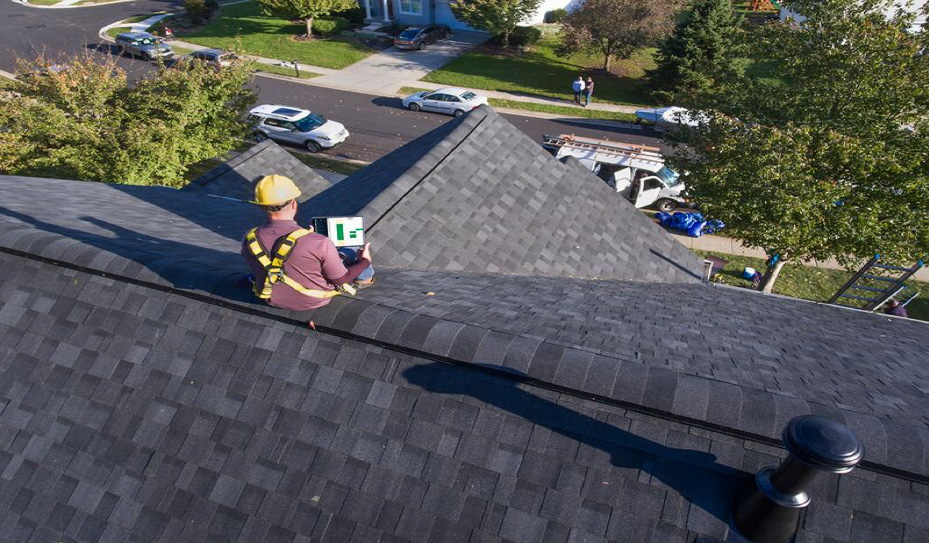
Why get your roof examined in the fall instead of another season? Roofing professionals may be less busy during the fall, as they deal with emergencies and reroofing jobs all summer. They may offer a free or low-cost inspection to help generate business. So, you may save a bit of money when you contact a roofer for a fall examination. Don’t leave it too late in the season though. You want to have enough time to fix problems before the snow starts falling.
It’s important to resolve any problem your roof has before the cold weather arrives. Roofs can sometimes be repaired and installed in the winter, but it’s more challenging for the roofing professional and more uncomfortable for you.
When you call a roofing professional for a fall roof review, what should you expect? You can’t do a proper roof inspection from the ground. The roofing professional will get on their ladder and carefully walk around on your roof. He/she will examine every visible part of the roof to make sure it is in good working order.
Your winter roof inspection should include:
- Shingles: During the checkup, your roofing professional will look for missing, damaged or improperly installed shingles. He/she will look for sections of shingles that appear sunken, which may also be a sign of damage. The roofing professional may also find shingles with a damaged sealant bond. If the loose shingle is otherwise in good condition, he/she can simply seal it.
- Flashing: Roof flashing is the thin metal sheet that surrounds certain roof features, such as chimneys, to prevent leaks. Your roofing professional will be looking to see if your flashing is bent or rusted, or has other signs of damage.
- Valleys: The roof valley is a particularly vulnerable area of the roof, especially in the winter. Different types of roof valleys perform differently. Your roofer will ensure that your valleys were installed correctly and that they remain in good condition. They may need to be cleaned, as pine needles and leaves have a tendency to collect in them.
- Gutters: Your gutters may need more work than just cleaning. Your roofer will be on the lookout for leaky, sagging or misaligned gutters.
- Sealant: Your roof likely has asphalt sealant keeping roof plumbing vent flashing or other roof features in place. You may also have sealant over exposed roofing nails. The roofing professional will ensure that there is enough sealant and that it hasn’t dried out and cracked.
- Signs of damage: There are other signs of damage the roofer will look for while examining your roof. He/she might find signs of an animal infestation, algae growth, tree damage and more.
3. Fall Repairs and Replacements
Your fall roof checkup may have revealed that your roof needs repairs or even replacement. Colder weather may affect a shingle’s sealant. If you are getting a repair or shingle replacement in the fall, you should ask your roofer how he/she will ensure that your new shingles get enough time in the sun to seal properly. Then, follow our tips to prepare for a roof replacement.
Depending on the problem that wore out your old roof, you may want to choose a new shingle type that can better withstand your climate conditions. For example, IKO’s Performance shingles offer increased protection from severe weather conditions. If you live through particularly harsh winters with hail and high winds, IKO’s Nordic™ shingles may be right for your roof.
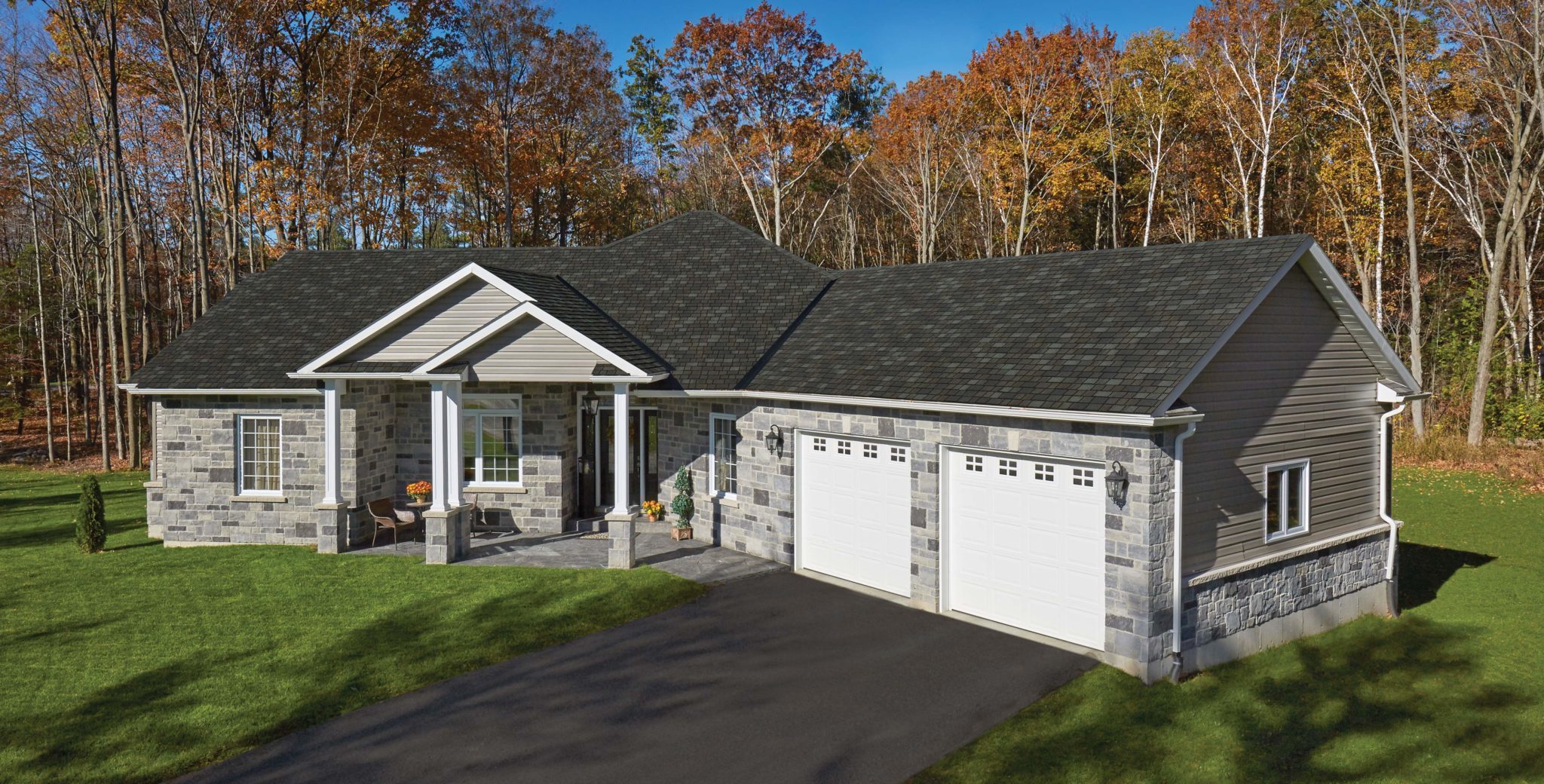
4. Check Attic Insulation and Ventilation
It’s about to get a lot colder in the coming months. One of the main ways to stay warm, save on utility costs and protect the integrity of your roof is to have good attic insulation and proper attic ventilation. Insulation keeps heat in so you spend less money running your furnace.
Proper insulation also keeps the surface of your shingles colder, which is key to preventing ice dams and the damage they can cause. Especially if you had an ice dam last year, have a roofing professional review your insulation and ventilation, and let you know if it needs replacement. He/she may also recommend you install more ice and water protector during a new roof installation to prevent damage from ice dams.
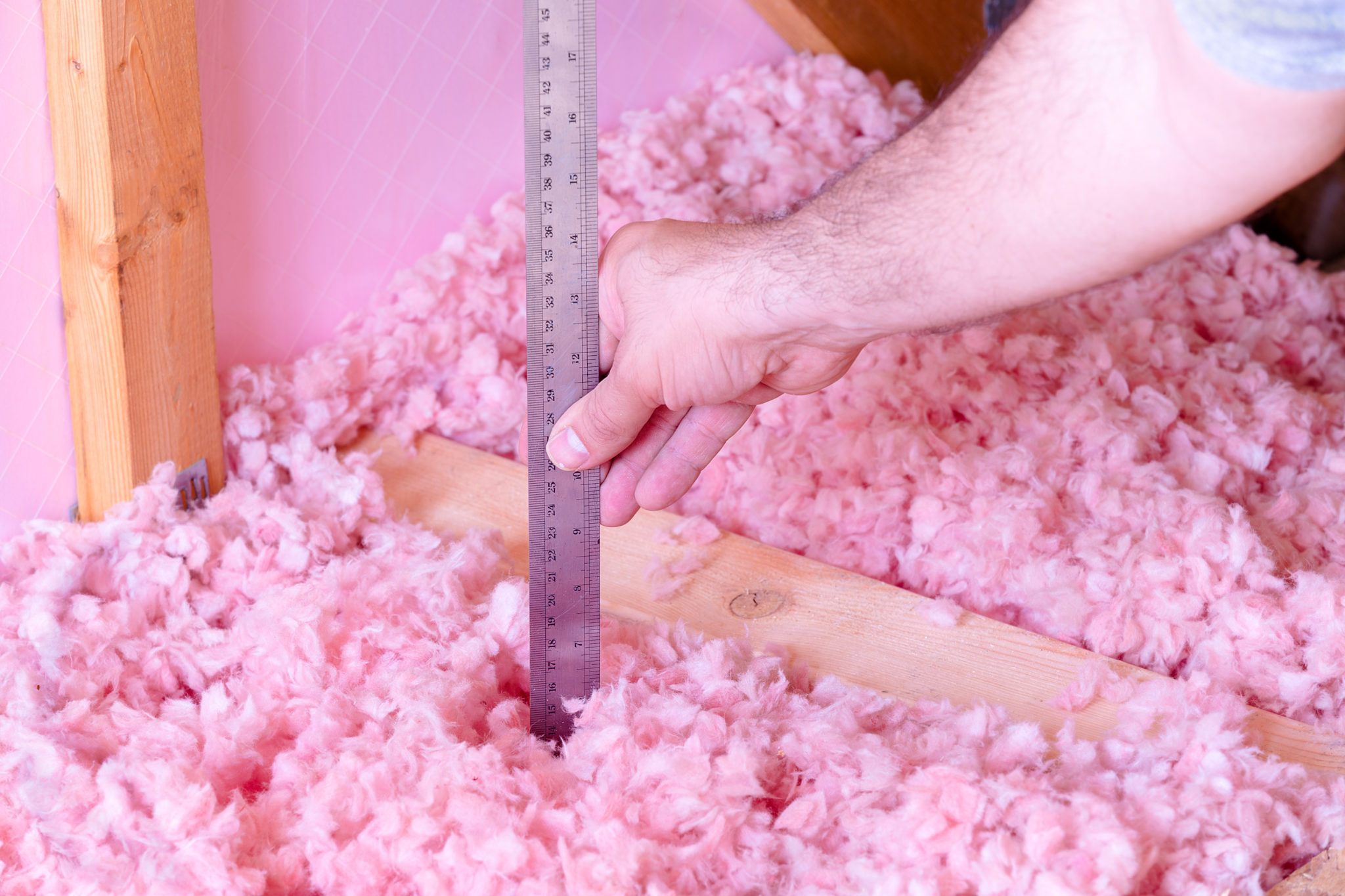
While in your attic, your roofing professional may take the opportunity to look for signs of leaks and animal infestation, and he/she may examine your attic ventilation. Ventilation allows moisture to leave your attic. If your attic has improper ventilation, moisture can build up in your attic and condense onto various surfaces. The resulting water may damage the framing or other parts of your home.
What should you expect from an attic checkup? Attics used to be very accessible. All your roofer had to do was pull down the hatch. However, if your home was constructed recently, it may be harder for your roofing professional to access your attic. The entry point is likely in the master bedroom or even the closet of the master bedroom. Further, it does make a bit of mess to open up the attic access point for the first time. Be prepared to do a little vacuuming afterwards.
The mess is worthwhile. Keeping your attic insulation and ventilation in good order may benefit you throughout the winter by keeping your home warmer and preventing ice dams on your roof.
5. Put up Fall and Winter Decor
Are you looking forward to the fall holidays? If hanging fall décor outside is part of your yearly tradition, be sure not to nail any of it to the roof. You should never add extra nails to your roof or use it to support heavy items, such as blow-up décor.
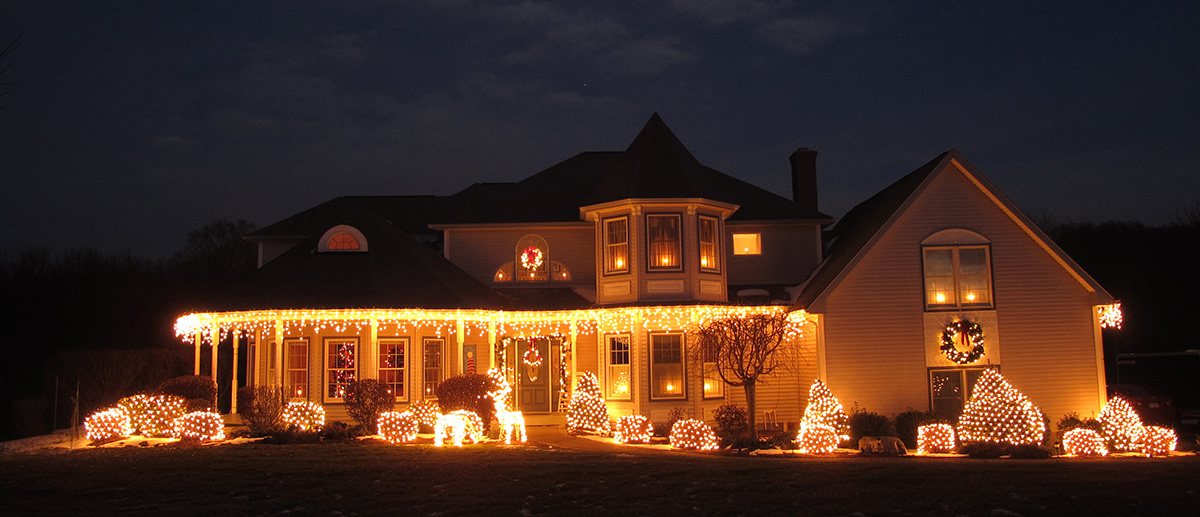
Fall is also a smart time to hang your winter holiday lights. Once the snow arrives, it may be too treacherous to use a ladder, as it may slip. Learn how to hang Christmas lights safely in the fall.
Prepare Your Roof for the Winter
Don’t take your roof for granted. Take some time in the fall to prepare your roof for winter every year. Your small investment keeps your roof in tip-top condition and ensures that you catch small concerns before they cause problems.
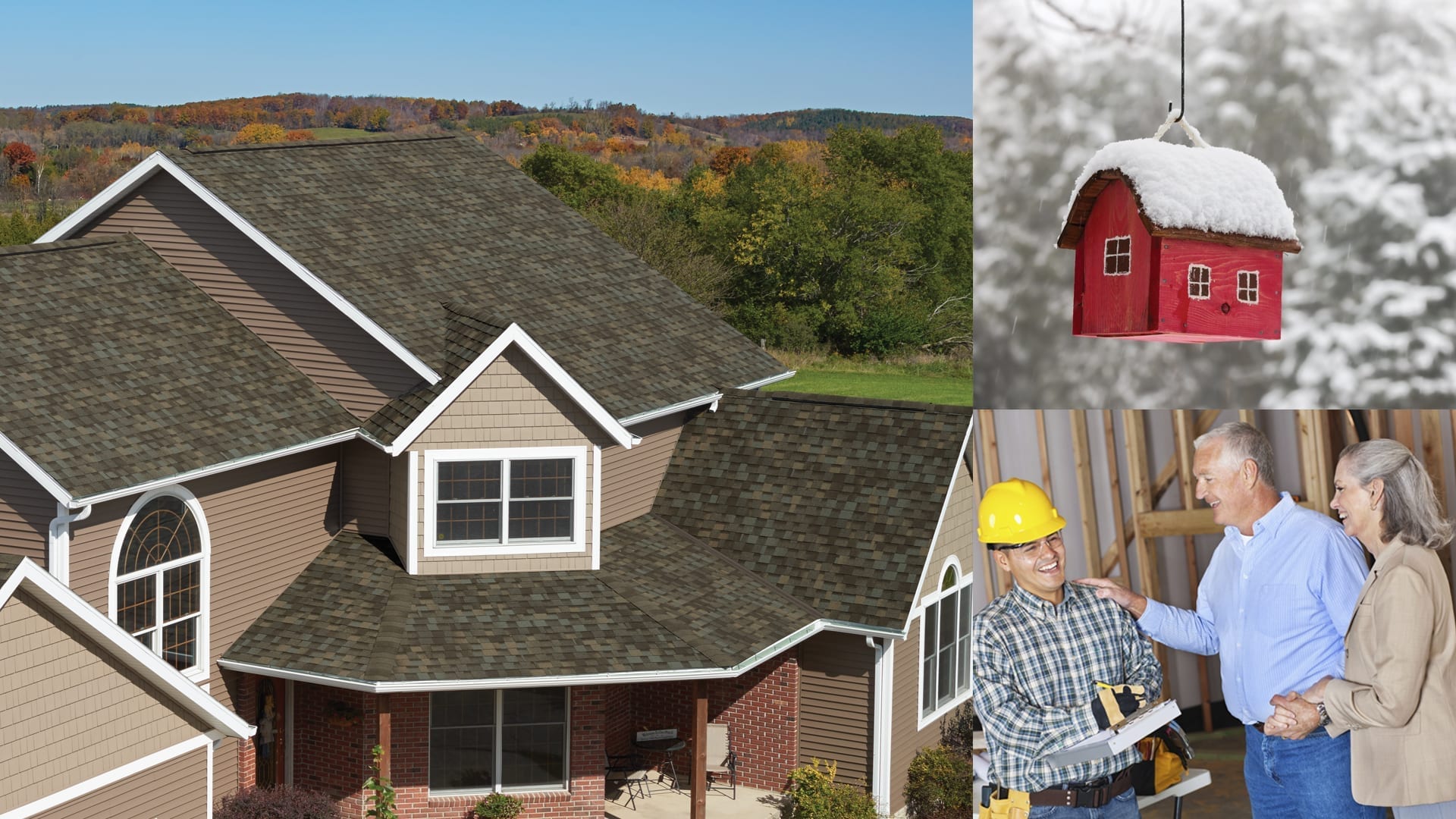
Reach out to a roofing professional through IKO’s Contractor Locator to schedule a fall roof inspection before winter arrives.
